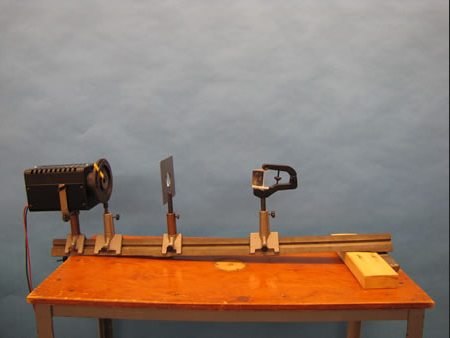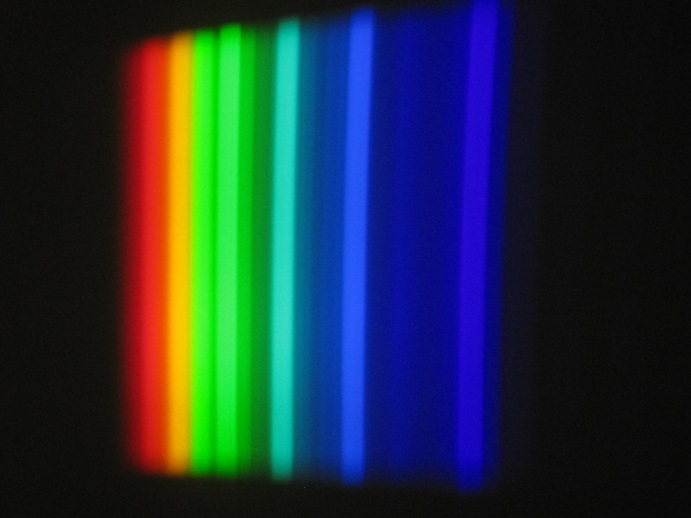Demos: 7A-22 Refraction by Prisms


A glass prism is mounted on an optical bench. A narrow beam of light is directed towards one side of the prism causing the light to be refracted. This demonstration serves primarily to show how refraction takes place at two non-parallel boundaries. With this setup you can also show dispersion and minimum angle of deviation. To illustrate refraction, draw a triangle to represent the prism. Near one end of the triangle draw an incident ray. At the point of intersection with the triangle, draw a normal. From this same point, draw a refracted ray. Remember, the incident ray bends towards the normal and the refracted ray bends away from the normal. Now where the refracted ray intersects the second side of the triangle, draw a normal at that point with a second refracted ray leaving the triangle. Emphasize that ray diagrams in the textbook assume a single monochromatic ray in most instances. For this demonstration we have a polychromatic light as evidenced by the spread of the beam into its constituent colors of light.